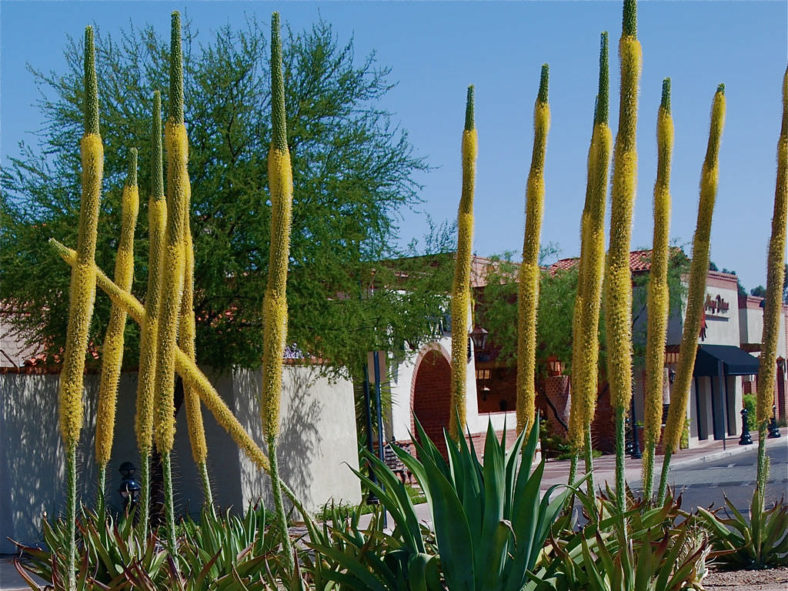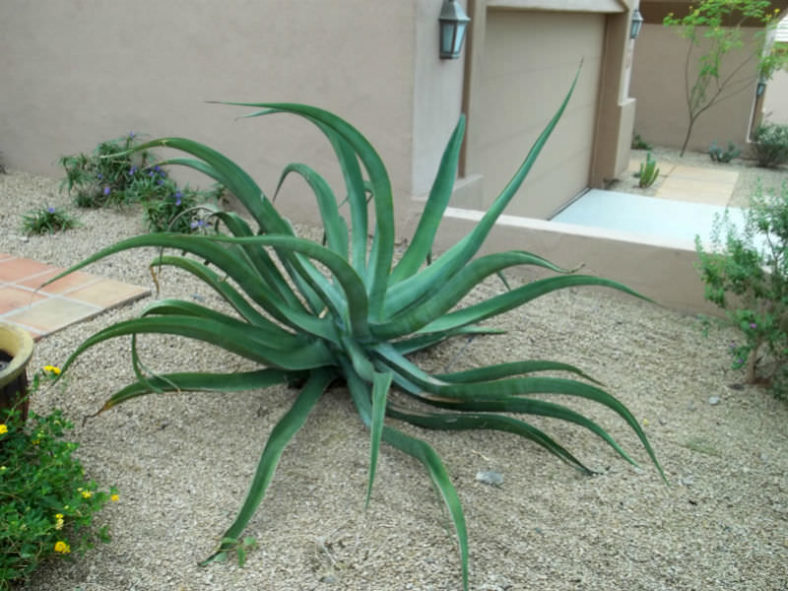Scientific Name
Agave vilmoriniana A. Berger
Common Name(s)
Octopus Agave
Synonym(s)
Agave eduardii, Agave mayoensis
Scientific Classification
Family: Asparagaceae
Subfamily: Agavoideae
Genus: Agave
Etymology
The specific epithet "vilmoriniana" (pronounced "vil-mor-in-ee-AY-nuh") honors Maurice de Vilmorin (1849-1918), a French botanist in whose garden at Les Barres (now the Arboretum national des Barres), Alwin Berger, the author of the first monograph on Agave "Die Agaven," first saw this plant.
Origin
Agave vilmoriniana is native to northwest Mexico. It occurs in canyons, forming large colonies on the side of cliffs.
Description
Agave vilmoriniana is a graceful succulent that forms a solitary rosette of narrow, gray-green leaves that curve upwards near the base and then backward near the tip, creating an octopus-like shape, hence the common name "Octopus Agave." The rosette can grow up to 4 feet (1.2 m) tall and reach a diameter of 6.6 feet (2 m). The leaves are deeply channeled, with very finely serrated margins that taper to a relatively soft terminal spine, measuring up to 3 feet (90 cm) in length and 4 inches (10 cm) in width.
At the end of its life, after 7 to 15 years, Agave vilmoriniana produces a dense raceme of yellow flowers, usually from spring to summer. The raceme can grow up to 15 feet (4.5 m) tall. The flowers are followed by seed pods and numerous bulbils borne in the axils of the bracteoles.
Cultivars

Hardiness
USDA hardiness zones 9a to 11b: from 20°F (-6.7°C) to 50°F (10°C).
How to Grow and Care
Agaves are not difficult plants to grow. They are slow-growing and dramatic and will even thrive on a bit of neglect. If you are the type of person who likes to fuss with houseplants and water a lot, Agave is probably not the plant for you. On the other hand, if you are the type of person who likes to set it and forget it, and you have a sunny window, Agave might be the way to go. Be aware that some large varieties will eventually outgrow your room (unless you have a large greenhouse), and Agave can be aggressive. They have irritating sap and sometimes very sharp thorns that can cause injuries to small children and even pets.
Generally, Agaves do not require repotting every year. Most species commonly found in cultivation grow very slowly and take a long time to outgrow their pot. It is also best to handle your plants as little as possible since they do not like to be disturbed. When repot, refresh the spent soil with a new potting mix and ensure the plant is firmly anchored in its pot. However, be careful not to pot the Agave too deep, as that will encourage stem rot during the growing season.
Learn more at How to Grow and Care for Agave.
Links
- Back to genus Agave
- Succupedia: Browse succulents by Scientific Name, Common Name, Genus, Family, USDA Hardiness Zone, Origin, or cacti by Genus
Photo Gallery
Click on a photo to see a larger version.


